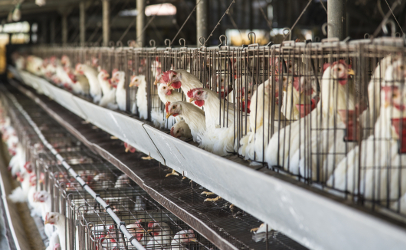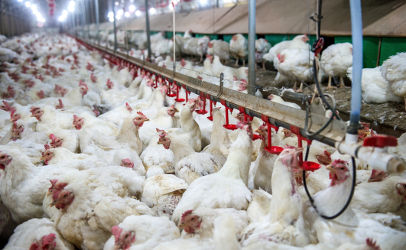There’s no food safety argument to be made for cage-free eggs versus those from chickens in other types of housing, according to the U.S. Court of Appeals for the 9th Circuit. Nor are cage-free eggs more nutritious.
In what animal activists see as a defeat, a three-judge appeals panel for the 9th Circuit ruled on Feb. 27 in favor of the federal government’s top food safety agencies on a question of egg carton labeling. In the findings, the panel’s rulings on food safety and the nutritional value of cage-free eggs might raise some doubts about the direction egg production seems to be going.
The plaintiff’s, led by Compassion over Killing and the Animal Legal Defense Fund, sought to persuade the judges — who were all appointed by President Bill Clinton — that caged hens produce eggs that are nutritionally inferior and that carry a greater risk of Salmonella contamination. The veteran panel of judges included: Michael Daly Hawkins, Marsha S. Berzon and Mary H. Murguia.
The 9th Circuit panel’s decision stops just short of calling those claims as “junk science.”

“To the extent plaintiffs’ petition argues that egg production methods were an omitted material fact that required disclosure because the hens’ living conditions affect the likelihood of Salmonella-contamination or the nutritional value of eggs, the FDA explained that the plaintiffs had provided insufficient reliable scientific evidence to support these claims,” the ruling says.

The three-judge panel said it did not want to “second guess” the Food and Drug Administration on the food safety and nutrition points, saying courts should be deferential to reviews of scientific judgements and technical analysis when its within an agency’s expertise.
FDA, which along with USDA’s Food Safety and Inspection Service (FSIS) and Agricultural Marketing Service (AMS) was a defendant in the litigation, made extensive arguments about food safety and nutrition values of egg production when the case was before the U.S. District Court for Northern California.
“Plaintiffs erroneously contend that the studies submitted with their petition demonstrate a causal connection between caged hens and an increase risk of Salmonella infection,” government attorneys argued. “FDA carefully reviewed and evaluated each of the studies plaintiffs provided and found them insufficient to establish that, based on production method alone, a conclusion about the relative risk of Salmonella in particular eggs could be made.”
FDA reviewed every study the animal activists presented and found each one “lacking” with “multiple and significant limitations” and providing “insufficient evidence” that caged hens produce eggs wih a higher incidence of Salmonella than eggs from cage-free hens.
FDA also pointed to some studies presented that “contradicted the conclusion desired by plaintiffs.” The animal activist studies, according to FDA, failed to control for non-housing variables such as flock size, age of buildings, history of Salmonella and geographic locations, and uniform sampling sizes.
As for nutritional value, it was much the same.
In court filings, attorneys for the government said: “FDA’s careful evaluation revealed that all of the studies submitted by plaintiffs to show that eggs produced by caged hens are nutritionally inferior failed to control for variables other than production method. That is, the studies failed to control the hens’ diet, location, and age, or the breed of hens, which made it impossible to determine to what extent, if any, the observed differences could be attributed to the production environment — i.e., caged versus free-range.”
The 9th Circuit panel affirmed the lower court’s grant of a summary judgement to the defendants, which was handed down by Vince G. Chhabria, the district’s presiding judge who was appointed by President Barack Obama.
Cage-free eggs are in demand because many retailers and restaurant chains have made promises to cease using eggs produced by hens kept in cages at some date in the future. Many have set 2025 as an outside target for making the switch.
To meet all the increased demand for cage-free eggs such changes are projected to create, producers will have to invest $9 to $10 billion to switch to cage-free housing, according to some industry estimates. Cage-free eggs currently cost $1 to $2 more per dozen than eggs from hens kept in battery cages.
Most companies who announce they are switching to cage-free eggs say they are doing so because more humane treatment is favored by their customers.
(To sign up for a free subscription to Food Safety News, click here.)
